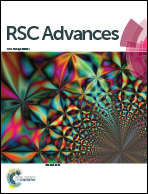Synergistic bactericide and antibiotic effects of dimeric, tetrameric, or palindromic peptides containing the RWQWR motif against Gram-positive and Gram-negative strains
Abstract
Dimeric and tetrameric peptides derived from LfcinB (20–25): RRWQWR, LfcinB (20–30): RRWQWRMKKLG, LfcinB (17–31): FKARRWQWRMKKLGA, or the palindromic sequence LfcinB (21–25)Pal: RWQWRWQWR were obtained by means of the SPPS-Fmoc/tBu methodology. The antibacterial activity of these molecules was evaluated against Escherichia coli (ATCC 25922 and ATCC 11775), Staphylococcus aureus (ATCC 25923), Enterococcus faecalis (ATCC 29212), and Pseudomonas aeruginosa (ATCC 27853). The dimer LfcinB (20–25)2: (RRWQWR)2K-Ahx, the tetramer LfcinB (20–25)4: (RRWQWR)4K2-Ahx2-C2, and the palindromic sequence LfcinB (21–25)Pal exhibited the highest antibacterial activity against the tested bacterial strains. In all cases, the antibacterial activity was dependent on peptide concentration. The polyvalent molecules LfcinB (20–25)2 and LfcinB (20–25)4 exhibited bacteriostatic and bactericidal activity against E. coli, P. aeruginosa, and S. aureus strains; additionally, this dimer and this tetramer combined with ciprofloxacin exhibited a synergistic antibacterial effect against E. coli ATCC 25922 and P. aeruginosa, respectively. Furthermore, the peptides LfcinB (20–30)4, LfcinB (20–25)4, and LfcinB (21–25)Pal combined with vancomycin exhibited a synergistic antibacterial effect against S. aureus and E. faecalis, respectively. This study showed that polyvalent peptides derived from LfcinB exhibit significant antibacterial activity, suggesting that these peptides could have a therapeutic application. Furthermore, our results suggest that polyvalent peptide synthesis could be considered as an innovative and viable strategy for obtaining promising antimicrobial molecules.

- This article is part of the themed collection: Celebrating Latin American Talent in Chemistry


 Please wait while we load your content...
Please wait while we load your content...